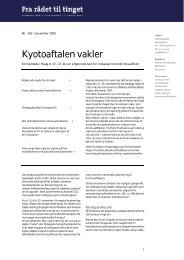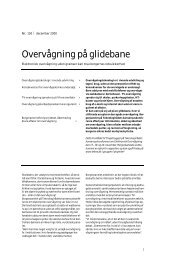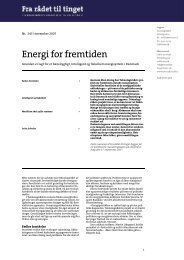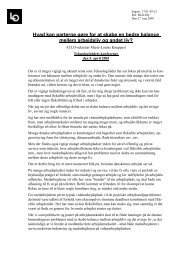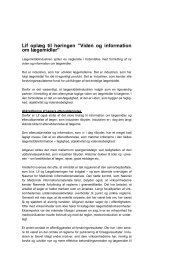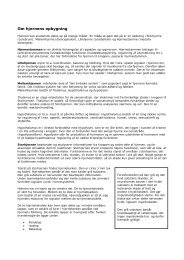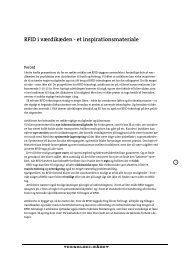Energi i fremtiden - globale, regionale og nationale ... - Teknologirådet
Energi i fremtiden - globale, regionale og nationale ... - Teknologirådet
Energi i fremtiden - globale, regionale og nationale ... - Teknologirådet
Create successful ePaper yourself
Turn your PDF publications into a flip-book with our unique Google optimized e-Paper software.
3% increase in the consumption. T<strong>og</strong>ether with a realistic decline rate in Russia we can estimate that the<br />
volume for export can be limited. In table 3.5 the Outlook suggest an increase in the production for FSU<br />
from 9.5 Mb/d in 2003 to 15.9 Mb/d in 2030. A more realistic assessment is given in Figure 15.<br />
Figure 17: Production of oil<br />
from “the Rest Of the World”,<br />
ROW. For countries that has<br />
passed the peak production<br />
the year for the rollover is<br />
given. The other countries are<br />
expected to reach rollover<br />
within the next 10 years.<br />
Subtracting FSU from Non-OPEC and we obtain a value for what we may term the rest of the world, ROW.<br />
Werner Zittel, member of ASPO, has studied it in detail [7]. In figure 17 illustrates how production from<br />
individual countries adds up. Around 70% of ROW production, 25 Mb/d, comes from countries that have<br />
already passed their peak of production, and are accordingly set to decline at 4% to 5% per year to 2030,<br />
when they will be able to produce around 8 Mb/d. The other group with a production of 10 Mb/d can at<br />
best have a 1% decline per year to 2030, giving production of 8 Mb/d. Adding these numbers gives 16<br />
Mb/d for the rest of the world, compared with the Outlook’s 27.5 Mb/d (43.4 Mb/d minus 15.9 Mb/d). It is<br />
evident that the Outlook forecasts are clearly unrealistically high.<br />
The next group to consider is the OPEC countries. In the reference scenario the estimated production<br />
should increase from 28.2 Mb/d to 64,8 Mb/d, an increase of 130%. The Outlook lists the demands on individual<br />
countries and the<br />
influence of the IEA<br />
outlook, Figure 18, is<br />
obvious.<br />
Figure 18: Production<br />
capacity year 2001 and<br />
demanded production from<br />
US Energy Information<br />
Administration in units of<br />
million barrels per day.<br />
Two months earlier Saudi<br />
Aramco had in Washington<br />
presented what they called<br />
the Maximum Sustainable<br />
Capacity, MSC. With a production of 12 Mb/d it clamed to have a sustainable production until 2033, see<br />
Figure 19. This is far from 22.5 Mb/d, proposed in the Outlook.<br />
63





